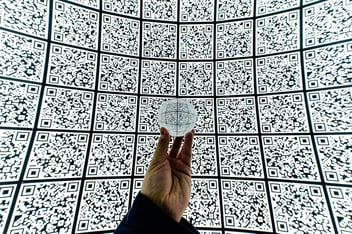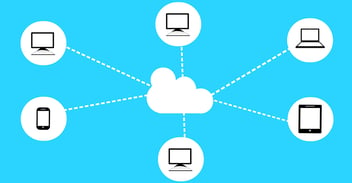The construction industry is facing a serious challenge: a shortage of skilled workers. With an aging workforce and a lack of new workers entering the field, contractors are struggling to find the talent they need to complete projects on time and within budget.
Fortunately, technology can play a crucial role in attracting and retaining workers in the construction industry. By embracing new tools and approaches, contractors can create a more appealing and efficient work environment, making it easier to attract and retain the best talent.
Here are some ways contractors can use technology to attract and retain workers:
Invest in mobile technology
The use of mobile technology has become increasingly widespread in recent years, and the construction industry is no exception. Contractors can invest in mobile devices and apps to improve the efficiency and productivity of their workers.

Mobile devices can be used for tasks such as time tracking, project management, and communication with team members and clients. By providing workers with the tools they need to do their jobs more efficiently, contractors can improve job satisfaction and reduce the risk of burnout.
Implement training and development programs
Technology can also be used to create and deliver effective training and development programs for workers.
For example, virtual and augmented reality simulations can provide hands-on experience with new tools and techniques, while online learning platforms can make it easier for workers to access the training they need, when they need it.

Investing in training and development programs enables contractors to help their workers stay up-to-date with the latest skills and techniques, making them more valuable to the organization.
Promote work-life balance
Technology can also play a role in promoting work-life balance for workers. For example, time tracking apps can be used to monitor working hours and ensure that workers are not being overworked.

Additionally, telecommuting options and flexible schedules can be made available to workers, making it easier for them to balance work and family commitments. Promoting work-life balance can create a more supportive and attractive work environment, which can help contractors attract and retain the best talent.
Improve communication
Clear and effective communication is essential for any construction project, and technology can help contractors achieve this goal. Tools such as instant messaging and video conferencing can be used to ensure that workers have quick and easy access to the information they need.

This can improve collaboration and reduce misunderstandings, which can help contractors complete projects on time and within budget.

Foster a sense of community
Technology can also be used to foster a sense of community among workers. For example, social media platforms and online forums can be used to create virtual communities where workers can share ideas, tips, and advice with each other.

This can help build a sense of camaraderie and support among workers, which can be a strong motivator for staying with a company long-term. Fostering a sense of community can create a more attractive work environment.
Things to avoid!
When trying to attract and retain workers, it's important to be mindful of the types of technology that might have a negative impact on worker satisfaction. Here are a few types of technology to avoid:
1. Outdated or non-user-friendly technology
Workers expect to use technology that is up-to-date, reliable, and easy to use. If contractors use outdated or non-user-friendly technology, workers may become frustrated and disengaged, which can negatively impact job satisfaction and turnover.
2. Technology that infringes on privacy
Workers expect to have their privacy respected when using technology in the workplace. Contractors should avoid using technology that collects or monitors data in a way that invades workers' privacy. This can include tools that track workers' locations or monitor their online activities.
3. Technology that creates extra work
Workers want technology that makes their lives easier, not harder. If contractors use technology that requires workers to complete extra tasks or navigate complicated processes, workers may become frustrated and disengaged. This is also why it's important for contractors to choose highly customizable software. With an extremely customizable tool in place, workers won't need to change their habits to fit the software, the software can fit them.
4. Technology that promotes micromanagement
Workers value autonomy and the ability to make decisions for themselves. Contractors should avoid using technology that promotes micromanagement, such as tools that closely monitor workers' performance. This can create a hostile work environment and negatively impact worker morale.
5. Technology that reduces face-to-face interaction
Workers value face-to-face interaction and the opportunity to build relationships with their colleagues. Contractors should be mindful of the ways in which technology can reduce face-to-face interaction, such as relying solely on email or instant messaging for communication.
By avoiding these types of technology, contractors can create a more positive and supportive work environment that will help them attract and retain skilled workers.
Final Thoughts
Technology can play a crucial role in attracting and retaining workers in the construction industry. By investing in mobile technology, implementing training and development programs, promoting work-life balance, improving communication, and fostering a sense of community, contractors can create a more attractive and supportive work environment, making it easier to attract and retain the best talent.
At the same time, contractors must ensure that they avoid common pitfalls when selecting technology to introduce into their workforce. The technology must be easy to use and make workers feel more efficient and comfortable in order for the technology to be well-received.






